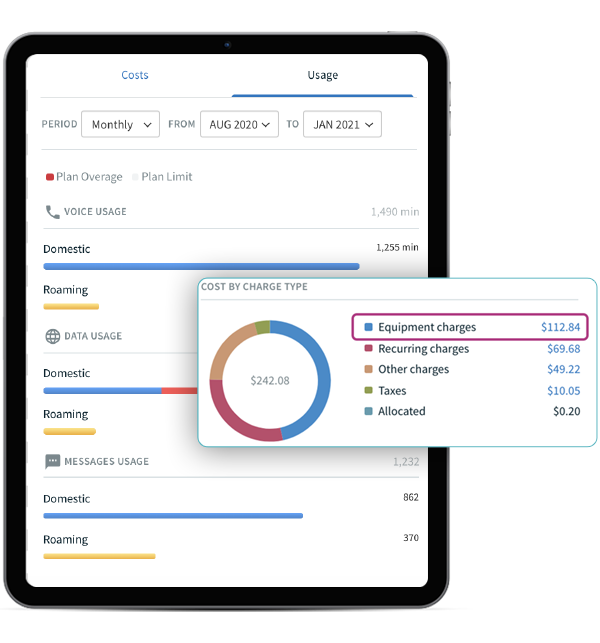The business world is constantly evolving, which means that businesses are always looking for ways to stay ahead of the competition. While some business leaders focus on improving operational efficiency and customer experience, others are investing in new technology solutions. Unfortunately, simply investing in new technology isn’t enough – every organization also needs effective technology expense management (TEM). Effective TEM decreases your organization’s risk of overspending on unnecessary or underperforming technologies while helping you get more value out of the solutions that you do buy. In this article we’ll explore why effective TEM is crucial for any size company, what it looks like when done well and how to implement it into your own business processes.

Technology Expense Management (TEM) is a critical component of a business’s financial health.
Technology Expense Management (TEM) is a critical component of a business’s financial health. TEM helps businesses get the most out of their IT investments by helping them manage their technology expenses and make better decisions about how they spend their money.
Here are some examples of how TEM can benefit your company:
Effective TEM can help you stay ahead of the competition.
If your business is not using technology effectively, it may be costing you more than just money. You could also be missing out on opportunities to grow and expand your company’s reach. For example, let’s say that one of your competitors has started using cloud storage solutions for all their files and documents instead of keeping them on physical servers in-house–and they’ve realized significant cost savings as a result! If this is true for your company as well, then effective TEM would allow you to learn about these advancements so that they can be applied within your own organization as well (or at least keep pace).
You may already be paying for technology services you aren’t using.
You might be paying for technology services you aren’t using. You might also be paying for software or subscriptions that you could get elsewhere at a lower cost, or not using to their full potential.
Here are some examples:
Cloud storage space – If your business uses cloud storage like Dropbox or Google Drive, consider whether the amount of data stored there is worth the monthly fee. If not, look into other options such as local hard drives and external drives instead of relying completely on third-party providers’ servers (which could crash at any time).
Mobile phone plans with unlimited talk/text/data – This can add up quickly depending on how many people in your company use their phones every day–and if they do need unlimited calling capabilities (for example), consider prepaid cell phone plans instead so that costs are more predictable each month rather than fluctuating based on usage patterns over time (which may be difficult to predict accurately).
You could be paying too much for technology that’s not providing value.
When it comes to technology expense management (TEM), it’s essential to understand the costs involved in order to ensure you are getting the best value for your money. This involves identifying what makes up your TEM costs, such as hardware and software purchases, subscriptions, licensing fees, maintenance and support costs, and other expenses related to your technology infrastructure.
Once you have a clear understanding of what makes up your TEM costs, you can start to analyze this data to identify potential areas of improvement. For example, you may find that you are paying for unused software licenses or redundant hardware that could be consolidated or eliminated to save costs. Or, you may discover that you are overpaying for certain services or subscriptions, and that negotiating better deals with vendors could help you save money.
By taking a closer look at your TEM costs, you can also identify areas where you may be able to optimize your spending. For example, you may be able to switch to more cost-effective cloud-based services or implement automation tools to reduce the workload on your IT team and improve efficiency.
Ultimately, understanding your TEM costs is critical to ensuring that you are getting the best value for your money and making informed decisions about your technology investments. By regularly reviewing and analyzing your TEM data, you can identify areas for improvement and make adjustments to optimize your spending and achieve your business goals.
You may be overpaying for your current technology solutions.
The first step to eliminating overpayment is determining if you are paying too much for your current solutions. If you’re already using a technology expense management (TEM) solution, then this process should be relatively straightforward. However, if your business isn’t using TEM software yet and is relying on manual processes or spreadsheets to manage its tech spending, then it’s time to get started!
Once you’ve collected all the necessary data and analyzed it in order to determine whether or not there are areas where spending could be reduced without sacrificing quality or functionality (and thus improving efficiency), there are three possible outcomes:
You find out that no changes need be made because everything is working perfectly well as it stands now;
You find out that some changes need to happen but they won’t require any major investments; * Or…you find out something really surprising–like how much money could actually be saved by making these adjustments!
Effective TEM helps businesses manage their technology expenses, which can lead to significant savings.
It helps you get ahead of the competition. While your competitors might be spending more money than they need to on technology, you’re saving money and moving forward with new equipment and programs that allow you to stay competitive.
It helps you save money by reducing costs associated with inefficient or outdated technologies. For example, if a piece of software is slowing down productivity or causing errors in other parts of the business (like accounting), replacing it will save time and money overall — not just in terms of purchase price but also by reducing downtime due to errors caused by using an inefficient program.
Effective TEM improves business performance through increased efficiency, productivity and profitability through improved management skills while ensuring compliance with regulatory requirements.
As you can see, effective TEM is an important part of any business’ financial health. It can help you get ahead of the competition and save money on your technology expenses. If you’re not already using a TEM solution or service provider, it might be time to consider one.





